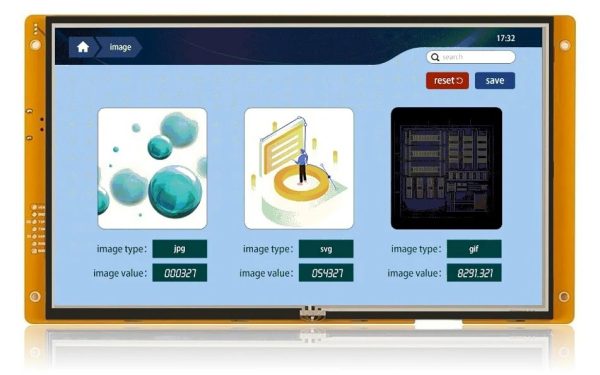
适用于环境设备的串口屏
在环境设备领域,精度和耐用性至关重要,选择合适的串口屏至关重要。这些显示屏作为用户与复杂环境监测系统之间的接口,提供实时数据并实现无缝交互。面对多种选择,选取最适合的串口屏成为关键决策。本文将探讨适用于环境设备的各类串口屏,重点考虑可见性、耐用性和功能性等因素。
1. 抗阳光直射串口屏
在户外环境监测应用中,抗阳光直射的可见性至关重要。抗阳光直射串口屏采用高亮度背光技术和防眩光技术,确保在强光户外环境下仍能清晰显示。这类显示屏通常配备透反射式或反射式LCD面板,通过利用环境光线提升可见性,同时避免过多耗电。夏普、LG和京瓷等品牌提供多种适用于户外应用的阳光可读串口屏,包括气象站、空气质量监测器和农业传感器。
2. 高温耐受串口屏
在严酷气候或工业环境中部署的环境设备常面临极端温度挑战。耐高温串口屏经过特殊设计,可在高温环境下稳定运行,性能不受影响。这些显示屏采用专用材料和涂层,确保在超过标准温度极限的条件下仍能正常工作。NEC显示解决方案、三菱电机和Advantech等制造商生产适用于工业级环境监测设备的耐高温串口屏,包括炉窑、焚烧炉和热成像系统。
3. 触摸屏串口屏
为了实现与环境监测系统的人机交互,触摸屏串口屏提供了直观的导航和控制功能。电容式或电阻式触摸屏技术使用户能够轻松输入命令、调整设置并可视化数据。触摸屏串口屏特别适用于需要操作员快速响应环境变化或现场配置系统参数的应用场景。Elo Touch Solutions、Planar Systems 和 AU Optronics 等品牌提供多种专为环境设备设计的触摸屏 LCD 显示屏,包括水质分析仪、气体检测器和污染监测站。
4. 发光 OLED 显示屏
在对体积小巧和能效要求极高的应用中,发光 OLED(有机发光二极管)显示屏提供了一种极具吸引力的解决方案。OLED显示屏可呈现鲜艳色彩和深邃黑色,非常适合在环境监测系统中展示图形数据和视觉警报。此外,OLED技术支持灵活的曲面显示设计,可集成到空间受限设备或非传统外形结构中。三星显示(Samsung Display)、LG显示(LG Display)和索尼公司(Sony Corporation)在OLED显示技术领域处于领先地位,为环境设备提供多样化解决方案,包括便携式空气质量监测器、可穿戴健康追踪器和车辆排放传感器。
5. IP等级防水串口屏
部署在潮湿或高湿度环境中的环境监测设备需要具备强大防水性能的串口屏。IP等级(防侵入保护)防水串口屏专为抵御水分、灰尘及其他环境污染物而设计,确保性能不受影响。这些显示屏采用密封外壳、防水连接器和疏水涂层,防止水分侵入并确保在严苛条件下可靠运行。领先制造商如松下、夏普和LG提供适用于水下传感器、防风雨外壳及海洋污染监测系统等应用的IP等级防水串口屏。
综上所述,为环境监测设备选择最合适的串口屏需综合考量可视性、耐用性和功能性等因素。无论是确保阳光下可读性、耐受极端温度、支持触摸屏交互、呈现生动视觉效果,还是提供防水保护,合适的串口屏都能提升环境监测系统的性能和易用性。通过利用知名制造商提供的多样化串口屏产品,设计师和工程师可在不同应用场景和运行条件下优化环境设备的效能与可靠性。